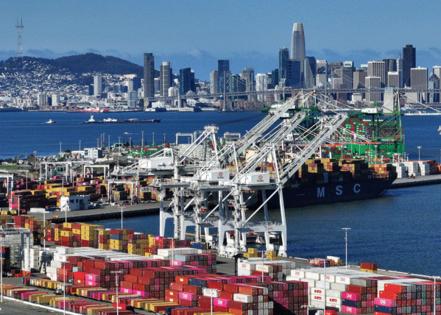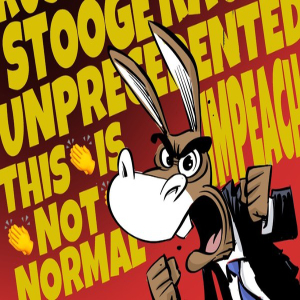Trump tariffs: Will Californians pay more for cars, phones, clothes?
Published in News & Features
President Donald Trump insisted Wednesday that his sweeping new tariffs on foreign goods will ultimately mean “lower prices for consumers.”
Most economists disagree, saying Californians will see higher prices very soon and endure what’s essentially a tax increase.
In a White House Rose Garden ceremony, talking to an audience of blue-collar workers, members of Congress and administration officials, Trump declared Wednesday as “the day we began to make America wealthy again.”
The president painted a bleak picture of how he said other nations have hurt American economic interests. “Our country and its taxpayers have been ripped off for more than 50 years but it’s not gonna happen any more,” he said.
Trump will impose 25% tariffs on foreign-made automobiles starting at midnight. He also announced reciprocal tariffs on 60 countries with what he said were the most unfair tariff practices. The United States will start charging those nations, which include the European Union, China, South Korea, Vietnam and others, roughly half of what those nations’ levy on this country’s goods.
“That means they do it to us, we do it to them,” he explained. Minimum tariff will be 10%.
Many economists contend that the tariffs, or taxes on imported goods, will hit American consumers hard and quickly.
“They will most definitely notice changes in supplies and prices because of the Trump tariffs from the time they are put into effect. The impact will almost be in as little as three months as existing contracts expire, and new ones are signed under new tariffs” said Gokce Soydemir, Foster Farms endowed professor of business economics at California State University, Stanislaus
He saw longer lasting effects as well. “Because of decreased competition at home, the quality of supplied goods will eventually diminish over time,” Soydemir said.
The UCLA Anderson Forecast cited the tariff policies as one key reason to issue a recession watch, meaning the first economic downturn in five years could be at hand.
“Tariffs will raise prices by directly raising the cost of production and consumption,” said Clement Bohr, an economist at the Forecast.
Will tariffs matter?
Here are some frequently asked questions about the tariffs:
Q. What prices will go up right away?
A. While the tariffs will affect prices of imports, pricing also depends on supply and demand, interest rates, how other countries react and other factors, so it’s difficult to pinpoint precise numbers.
Sung Won Sohn, president of SS Economics in Los Angeles, lists several areas where prices could climb noticeably.
“Tariffs make it more expensive to bring in electronics from countries like China or South Korea. That means higher prices on phones, laptops and TVs for U.S. consumers and businesses. It could also slow down innovation if companies cut back on upgrading tech due to cost,” he said.
Sohn also cited clothing costs. “The U.S. imports a lot of clothing and shoes from Asia. With tariffs, those products would get more expensive impacting both consumers and retail companies. Budget-conscious households would feel this the most,” he said.
Q. Reports say auto prices will shoot up right away. Is that so?
A. “Most U.S. car manufacturers rely on foreign-made parts. Tariffs would drive up the cost of assembling vehicles here, making cars more expensive for buyers and possibly reducing sales,” Sohn said.
The National Automobile Dealers Association did not give specific numbers, but said in a statement the tariffs “could put the purchase of a new car out of reach for an increasing number of American consumers.”
Sen. Alex Padilla, D-Calif., saw immediate consumer pain. “Trump’s tariffs are going to raise prices on working families in California and across the country,” he said.
Asked if supply and demand and other factors could ease the impact of the tariffs, Padilla insisted the tariffs are a “threat” to price stability.
Will tariffs cut into my income?
Q. Is there any way to say how much the tariffs could cost American households overall?
A. Several economic models have studied the potential impact. Last year, Kimberly Clausing and Mary Lovely, senior fellows at the nonpartisan Peterson Institute for International Economics, said Trump tariffs were likely to cost a middle income-household about $1,700 in higher taxes each year.
The study assumed 10% tariffs on most countries but up to 60% on Chinese products. Trump Wednesday said the tariff on Chinese products would be 34%.
In January, the nonpartisan Tax Policy Center estimated that a 25% tariff on goods from Canada and Mexico would reduce the income of a middle-income earner by about $930 annually.
“Research has shown that importing businesses and their domestic consumers bear the costs of tariffs,” the center said.
Q. Critics say the tariffs are effectively a tax increase. Trump and his allies say benefits will outweigh the pain. Who’s right?
A. “The tariffs will ultimately come out of consumers’ pockets, as such it can be seen as an alternative form of taxation rather than external revenue,” said Soydemir.
Republicans, who control Congress, are on a path to pass trillions of dollars in tax relief. Among their plans are to continue most current tax policies, which expire at the end of this year, and add some new wrinkles.
Among the plans being considered are lifting the limit on how much people can deduct from federal income tax for state and local taxes, which would be a huge break for California’s middle- and upper-class taxpayers. Also being discussed is ending taxation of Social Security benefits.
The Senate is hoping to take its first legislative step toward approving tax breaks this week.
Will interest rates go up?
Q. Will the tariffs impact interest rates?
A. Indirectly, they could. The Federal Reserve largely controls the path of interest rates. It’s expected to lower rates later this year, but if the rate of inflation increases, the Fed would likely back off – and could increase rates.
Higher interest rates tend to dampen demand for goods and services, which in theory should drive prices downward.
In California, existing, single-family home sales in February, the latest data available, were up 11.6% on a seasonally adjusted annualized basis. The statewide median home price was $829,060, down 1.2% from January.
The upturn was the result of somewhat lower mortgage interest rates and more homes for sale, said Jordan Levine, senior vice president and chief economist at the California Association of Realtors. If rates stabilize later this year, he saw further improvement.
Q. Will the tariffs help drive the state and country into a recession?
A. Mark Schniepp, director of the Santa Barbara-based California Economic Forecast, called the current economic situation, including the White House’s government cutbacks and crackdown on illegal immigration, enveloped in “an age of uncertainty.”
“While many people believe that these measures are both necessary and noble, and support the America First principles that the Trump candidacy espoused throughout the campaign, they will also disrupt the status quo and create economic impacts that will result in some short-term pain,” Schniepp said in his March newsletter.
That could mean higher prices, but also higher wages in order to woo new workers into areas that employed undocumented immigrants.
Overall, he said, economic growth this year “could also be impacted.”
_____
©2025 McClatchy Washington Bureau. Visit mcclatchydc.com. Distributed by Tribune Content Agency, LLC.







Comments